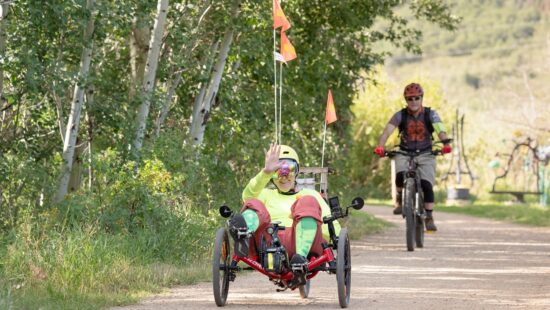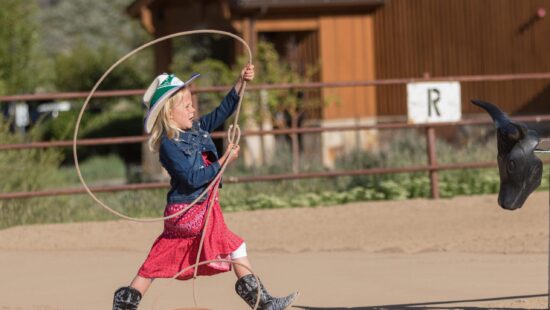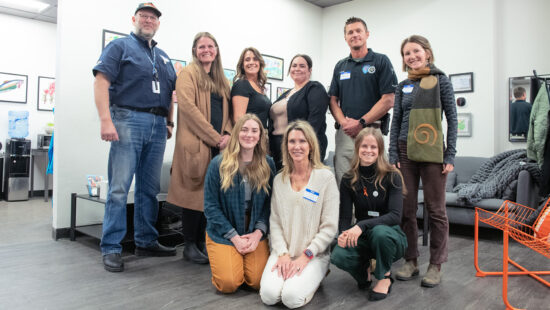Sports
NAC joins 500 day countdown to Paris Paralympics

Park City's National Ability Center. Photo: TownLift
PARK CITY, Utah — The Paris 2024 Summer Olympic/Paralympic Games hit a milestone over the weekend of 500 days to go.
The 159 page document recently published by the International Paralympic Committee (IPC) spells out the Qualification Regulations that athletes with disabilities must meet to participate.
Between now and Games Time, the 4,400 athletes from 22 sports will contend with General IPC Regulations on Eligibility, IPC Redistribution Policy of Vacant Qualification Slots, Universality Wild Cards, among other Standard Operating Procedures.
Park City’s National Ability Center (NAC) and other Utah training sites, send many athletes with disabilities to both the Winter and Summer Paralympic Games. At the most recent Summer Para Games, four specific sports were represented by Utahns; Para Athletics, Goalball, Wheelchair Basketball, and Wheelchair Fencing.
Elite athletes with disabilities go through a rigorous system of medical checks called classification. It’s overseen by national and international classifiers.
Classification via submission of medical diagnostic forms happens prior to competitions, but can also be given by medical professionals when athletes arrive at a competition.
The first stage of classification is a series of tests to ensure that a player has an ‘eligible impairment.’ This means that their disability effects their ability to play according to some minimum requirements.
The next step is for an athlete to be given a ‘sport class’ according to the results of tests and medical evidence that they provide to classifiers.
- Based in Germany, The International Para Athletics Federation for track and field has 10 eligible impairment types: eight physical impairments as well as vision impairment and intellectual impairment.
Para Athletics impairment type description:
- Impaired muscle power: Athletes with impaired muscle power have a Health Condition that either reduces or eliminates their ability to voluntarily contract their muscles in order to move or to generate force. Examples of an underlying health condition that may lead to impaired muscle power include spinal cord injury (complete or incomplete, tetra-or paraplegia or paraparesis), muscular dystrophy, post-polio syndrome and spina bifida.
- Impaired passive range of movement: Athletes with impaired passive range of movement have a restriction or a lack of passive movement in one or more joints. Examples of an underlying health condition that may lead to impaired passive range of movement include arthrogryposis and contracture resulting from chronic joint immobilization or trauma affecting a joint.
- Limb deficiency: Athletes with limb deficiency have total or partial absence of bones or joints as a consequence of trauma (for example traumatic amputation), illness (for example amputation due to bone cancer) or congenital limb deficiency (for example dysmelia).
- Leg length difference : Athletes with leg length difference have a difference in the length of their legs as a result of a disturbance of limb growth, or as a result of trauma.
- Short Stature: Athletes with short stature have a reduced length in the bones of the upper limbs, lower limbs and/or trunk. Examples of an underlying health condition that may lead to short stature include achondroplasia, growth hormone dysfunction, and osteogenesis imperfecta.
- Hypertonia : Athletes with Hypertonia have an increase in muscle tension and a reduced ability of a muscle to stretch caused by damage to the central nervous system.
Examples of an underlying health condition that may lead to Hypertonia include cerebral palsy, traumatic brain injury and stroke. - Ataxia: Athletes with Ataxia have uncoordinated movements caused by damage to the central nervous system.
Examples of an underlying health condition that may lead to Ataxia include cerebral palsy, traumatic brain injury, stroke and multiple sclerosis. - Athetosis: Athletes with Athetosis have continual slow involuntary movements. Examples of an Underlying Health Condition that may lead to Athetosis include cerebral palsy, traumatic brain injury and stroke.
- Vision Impairment: Athletes with Vision Impairment have reduced, or no vision caused by damage to the eye structure, optical nerves or optical pathways, or visual cortex of the brain.
Examples of an Underlying Health Condition that may lead to Vision Impairment include retinitis pigmentosa and diabetic retinopathy. - Intellectual Impairment: Athletes with an Intellectual Impairment have a restriction in intellectual functioning and adaptive behavior in which affects conceptual, social and practical adaptive skills required for everyday life. This Impairment must be present before the age of 18.
- Goalball is somewhat similar to indoor soccer whereby athletes lay on the ground and block balls from rolling into goals with their entire bodies. The balls have bells inside them to aid athletes location of them. Also based in Germany, the International Goalball Federation blind Classifications are as follows:
- B1
- B2
- B3
B1 and B2 players have the most severe impairments.
In Goalball, all athletes compete together on the same team and wear eyeshades to ensure a level-playing field for all team members.
- Switzerland is home to the International Wheelchair basketball Federation. Athletes have one of the following eligible impairments:
- Impaired muscle power
- Impaired passive range of movement
- Limb deficiency
- Leg length difference
- Hypertonia
- Ataxia
- Athetosis
- Headquartered in the United Kingdom is the International Wheelchair Fencing Federation. In wheelchair fencing, athletes who use wheelchairs are eligible to compete and they will have an impairment that belongs to one of following eligibility groups laid out by the International Paralympic Committee:
- Impaired muscle power
- Athetosis
- Impaired passive range of movement
- Hypertonia
- Limb deficiency
- Ataxia
- Leg length difference
There are three divisions of competition – A, B and C. Only categories A and B feature at the Paralympic Games, but in Wheelchair Fencing competitions those athletes in category C can also compete. This is part of the sport’s development as these athletes have the most severe impairments but are currently least represented in the sport. Fencers in category A have good trunk control, whereas category B athletes have an impairment that impacts their trunk or their fencing arm.
New and existing national and international Classifiers engage in ongoing training to classify new athletes and review existing athletes’ status.
A panel of two-three classifiers assess each athlete. Classifications commissions are comprised of representatives from not only different countries but as well different continents.
Classification assesses a person’s ability and impairment, and in so doing, helps to ensure that Para sports remain fair.




















